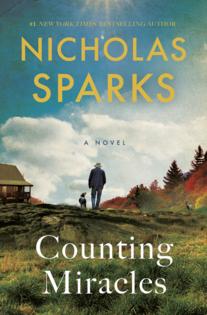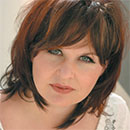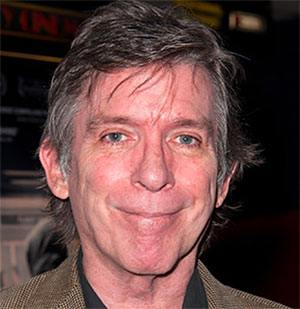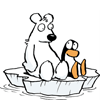How Nicholas Sparks drew on the Bible for new novel 'Counting Miracles'
Published in Books News
Nicholas Sparks can’t always remember the way a book idea comes to him, but for the bestselling author’s newest novel, “Counting Miracles,” Sparks knows exactly how it happened.
“Not all my books are so clear,” Sparks says by phone in mid-September from his home in New Bern, North Carolina (which, unlike western North Carolina, would escape the worst of Hurricane Helene later that month). “But the original inspiration for this one is I got this image in my head of this old guy, hurt and injured in a forest with no one around him, and his dog standing guard over him.
“I can’t tell you the second idea or the third idea, which led to the rest of the story, but the original inspiration I just couldn’t get that picture out of my head,” he says. “And you start asking yourself questions, and little by little, a story comes together.”
In “Counting Miracles,” the old man stranded in the Uwharrie National Forest near Asheboro, North Carolina, is Jasper, an almost hermit-like figure who retreated from most contact with the public after a family tragedy years earlier.
Then there’s Tanner, a former Army Ranger, who most recently has worked for United States aid efforts in Africa, comes to Asheboro in search of his father. He meets Caitlin, a divorced doctor and mother of two. A romance begins as the town is captivated by reports of a sighting of a rare white deer in the forest.
In an interview edited for length and clarity, Sparks talked about weaving the biblical story of Job into his romantic drama, how Tanner and Caitlin compare to characters in his other novels, which include “The Notebook,” “The Longest Ride,” and “Nights In Rodanthe,” and more.
Q: Jasper has had all sorts of trials and tribulations in his life. He’s a Job-like figure who comes to question his faith. How’d you settle there?
A: I think a lot of people, more common than not, are familiar with the story of Job. That they feel as though they’re being tested by life itself at one point or another. I remember when I was in my 20s. My mom died in a horseback riding accident. Not too many years later my dad died in a car accident, and my younger sister died of a brain tumor.
It was pretty much most of my family. I just had a brother left. So you’re looking up and saying, ‘OK, is there anything else that can happen to me here? I think that’s a pretty common feeling when one is under great turbulence and trial.
More than anything, what I try to do when I write these stories is imbue a sense of universality to all of these elements of their story, with the knowledge that, of course, everyone has their own unique story.
Q: But you create many more details beyond the basic hardships someone like Jasper has endured.
A: When it comes to Jasper, I figured, OK, he’s a hermit in the woods. Well, why is he a hermit? Why has he withdrawn from the world? Somewhere fairly soon in the conception of this story, prior to writing, I said, you know what, what if I did a modern retelling of Job?
I said, OK, let’s make a little bit of those elements in Jasper’s backstory. Of course, Job was this great man of faith, so Jasper had to be this great man of faith, right? So his dad was religious and his grandfather started the church. Then you just kind of follow the story, giving him something to do at the present moment. So he tries to save the white deer from poachers.
Q: I liked how he’s constantly thinking of the Bible verses his father taught him. Were these verses mostly ones you already knew or did you have to research to find the right ones?
A: Certainly for some of them I had to research but others were at my fingertips. I think it’s important to note that I wouldn’t necessarily consider this a Christian book. It’s just Jasper was one of the characters, and part of his character included a lot of religious elements in his childhood background through adolescence and early adulthood.
But, yeah, some of them (were familiar). Look, if you don’t know the story of ‘turn the other cheek,’ you know, come on. That’s pretty common, right? But some of the more obscure ones, like the one that led to the title of the novel, from the book of Job, that one I had to look up.
Q: Let’s switch to Tanner and Caitlin, who are more of the traditional romantic love interests. How are they similar to couples you’ve written in the past and how are they different?
A: Tanner, of course, was kind of a mirror image of Jasper, in that one of the themes of the novel is the study of grief. How does one deal with grief in their life? You have Jasper, who pretty much retreats from the world, and then you have Tanner, who reacts in an opposite way. And he’s rootless. He’s an unsettled soul, so to speak.
And that differs a lot from many of the previous characters in my novels. Most of them, with the exception of a couple, are more settled in their lives than Tanner has been. He’s lived in places but they’re not home. That’s one of the worries that his grandmother sees in him, that you’ve got to find where you belong.
You know the line from ‘The Wizard of Oz,’ ‘There’s no place like home,’ but what if you don’t have one? So it was an exploration of that: How does one find where one belongs?
Q: And Caitlin?
A: She differs from my characters in that, look, she’s been in love before. Some of my characters have, but not all of them. Sometimes I write about first love. She’s divorced, and again, I’ve done that a couple of times. And she differs in that she’s got a pretty professional job. She’s a physician, and she views her job as also being a mother.
So she’s always torn between that balance. How do I be a good mom? How do I do the best I can in my work? And how do I do the best I can for my kids? That just really mimics a lot of the women in their 40s that I know in my life.
Q: It’s very common in the world.
A: And it goes exactly to your question. When creating characters, I strive for this balance between universality and interesting and original. That might strike you as common sense. It’s incredibly difficult to do. You can do two of those very easily.
You can do interesting and original and come up with Hannibal Lecter. The problem is that not too many people have ever experienced someone like that in their life. If it’s utterly universal, how do you make it interesting?
Q: I want to ask you about the adaptability of your books. You’ve written more than 25, and many have become movies. “The Notebook” became a movie and now is a Broadway musical. What makes them so appealing for adaptation?
A: Once one gets made and it’s successful they make another one. That continues to happen. At the same time, I think, as a general rule, I tend to be a very visual writer, and there’s an efficiency to the visuals.
I remember once I was reading Thomas Hardy and there was like a six-page description of a meadow. Going on and on about the heather. And I’m like, ‘OK, I got it, purple flowers.’
So I think the stories are easy to adapt to a screenplay and then a film because there’s already a visual component and efficient element within the context of the novel.
Q: And ‘The Notebook’ becoming a musical?
A: A really interesting process and journey. I was involved every step of the way. We brought on (singer-songwriter) Ingrid Michaelson pretty much first, and she was already writing music by that evening. Even before she was signed, she was already sending music.
It’s really wonderful to watch really brilliant, creative people do what they’re good at. So it was a joy for me to watch this entire show come together. It’s beautiful and wonderful and I couldn’t be more thrilled with the final product.
©2024 MediaNews Group, Inc. Visit ocregister.com. Distributed by Tribune Content Agency, LLC.













Comments